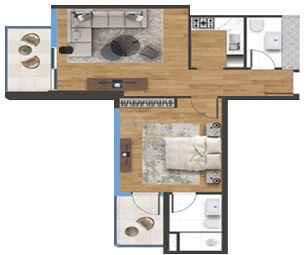Developing Technologies Transforming the Construction Market Today

The construction marketplace is no stranger to technological innovation, and after this it really is experiencing a wave of emerging technologies that promise to change the way in which things are built. From advanced robotics and 3D printing to augmented reality and the Internet of Things (IoT), a is embracing new tools and processes that are improving safety, efficiency, and sustainability. Within this blog, we'll take a look at six of the very exciting emerging technologies within the construction industry today and explore how they are revolutionizing how we design, build, and gaze after the structures that shape our society.

Latest Trends in Construction Technology
Building Information Modelling (BIM)
One of the most unarguably popular technologies is Building Information Modelling (BIM) - an electronic digital procedure that involves creating a 3D label of a building and it is components, which you can use for design, construction, and maintenance purposes. BIM allows architects, engineers, and contractors to collaborate and coordinate their efforts much better, reducing errors, and improving efficiency. Over the last decade, BIM has grown to be an important tool in the construction industry, improving productivity, quality, and sustainability.
For instance, BIM was extensively found in the creation of the Shanghai Tower, an internationally recognized architectural project with an exemplar for BIM projects, because of its status among the tallest and greenest skyscrapers on the globe. More than 30 AEC consulting firms were involved in the project, with many subcontractors and extended design project teams accountable for specific aspects of the large skyscraper. They utilized BIM to offer the intense coordination needed to see the project to fruition.
Prefabrication
Prefabrication, also called modular construction, essentially means creating buildings or building components at the location besides the task site. This technique has became popular in the construction industry due to the ability to reduce construction time, minimize waste, while increasing qc. Prefabrication works extremely well in several construction projects for example housing, offices, schools, and hospitals. Your building components could be prefabricated off-site and then assembled quickly on-site, reducing disruption towards the neighborhood. This strategy also permits an even more accurate timeline for project completion, as the time spent on-site is significantly reduced.
Drone Technology
Drones are the most cutting-edge construction tools, supplying a great deal of applications in construction, such as surveying land, mapping sites, inspecting structures, and monitoring project progress. They can conduct site surveys faster and much more accurately than the usual ground crew, plus they are less than aerial imaging. They can also be equipped with various sensors to get data on environmental factors such as temperature, humidity, and quality of air. Through providing accurate and timely information, drones may help construction teams make more informed decisions, improve safety, and lower project costs.
3D Printing
3D printing technology has begun to revolutionize the development industry by providing an alternative solution approach to construction which is more sustainable, efficient, and cost-effective. Fractional treatments permits the roll-out of large-scale objects utilizing a layer-by-layer approach, rendering it perfect for creating complex architectural designs and geometric shapes. 3D printing may be used to create concrete as well as other building materials, for example steel and plastic. Each day obtain materials more quickly and streamline the task by eliminating unnecessary measures in the middle. 3D printing also allows for printing materials on-site, reducing waste and saving money on transportation and storage.
Recently, a three-story apartment building in Wallhausen, Germany was designed and built using COBOD's 3D printer. It stands currently since the tallest 3D-printed residential building (most 3D-printed homes are only one story). This project was printed on-site, therefore there were no individual parts that would have to be sent and assembled, in comparison to some other like-sized ambitious projects. This resulted in price savings and in addition made the job more environmentally and sustainably friendly mindful about was no need for shipment.
Internet of products (IoT)
IoT or the Internet of Things is really a technology that gathers data from the 3 linked devices using sensors and algorithms. Such data benefits the building industry and allows professionals to spot safety concerns and confirm that construction is proceeding based on schedule. Since real-time information is open to construction companies because of sensors, they could act swiftly and expertly.
To read more check out the best site: dubai.etagi.com
